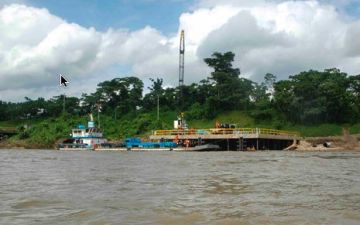Kelly Hearn has made six trips into the Amazonian rainforest to give a big-picture look at the hydrocarbon industry's push into the Tropical Andes. Media attention has turned on crop, logging and cattle threats to the Brazilian Amazon. But recent oil and gas finds are turning the eastern slopes of the Andes Mountains and the adjacent Amazonian lowlands of Colombia, Ecuador, Peru and Bolivia into a hydrocarbon hotspot.
In Peru and Ecuador, where biodiversity levels peak and activists say Big Oil has penetrated public institutions, the problem is especially acute: Over half of Peru's pristine rainforests are now zoned for oil and gas, while 80 percent of the Ecuadorian Amazon is on the auction block. Kelly's work synthesizes a year's worth of reporting on hydrocarbon activities and influences in northern Ecuador and south-eastern Peru.
His story presents evidence of a government cover-up involving Camisea, a highly controversial rainforest pipeline in the Peruvian Amazon, and presents critics' allegations against the project's backers, including Hunt Oil, a Dallas oil company with close Bush ties. His story examines the controversial role played by the U.S. taxpayer supported Inter-American Development Bank in the fast expanding Amazonian oil boom, and maps self-referencing links between the bank, Hunt Oil and formerly high-ranking Peruvian government officials.
A story he filed from northern Peru about a landmark legal case waged by Peruvian natives against Occidental Petroleum was published in The Washington Post.


